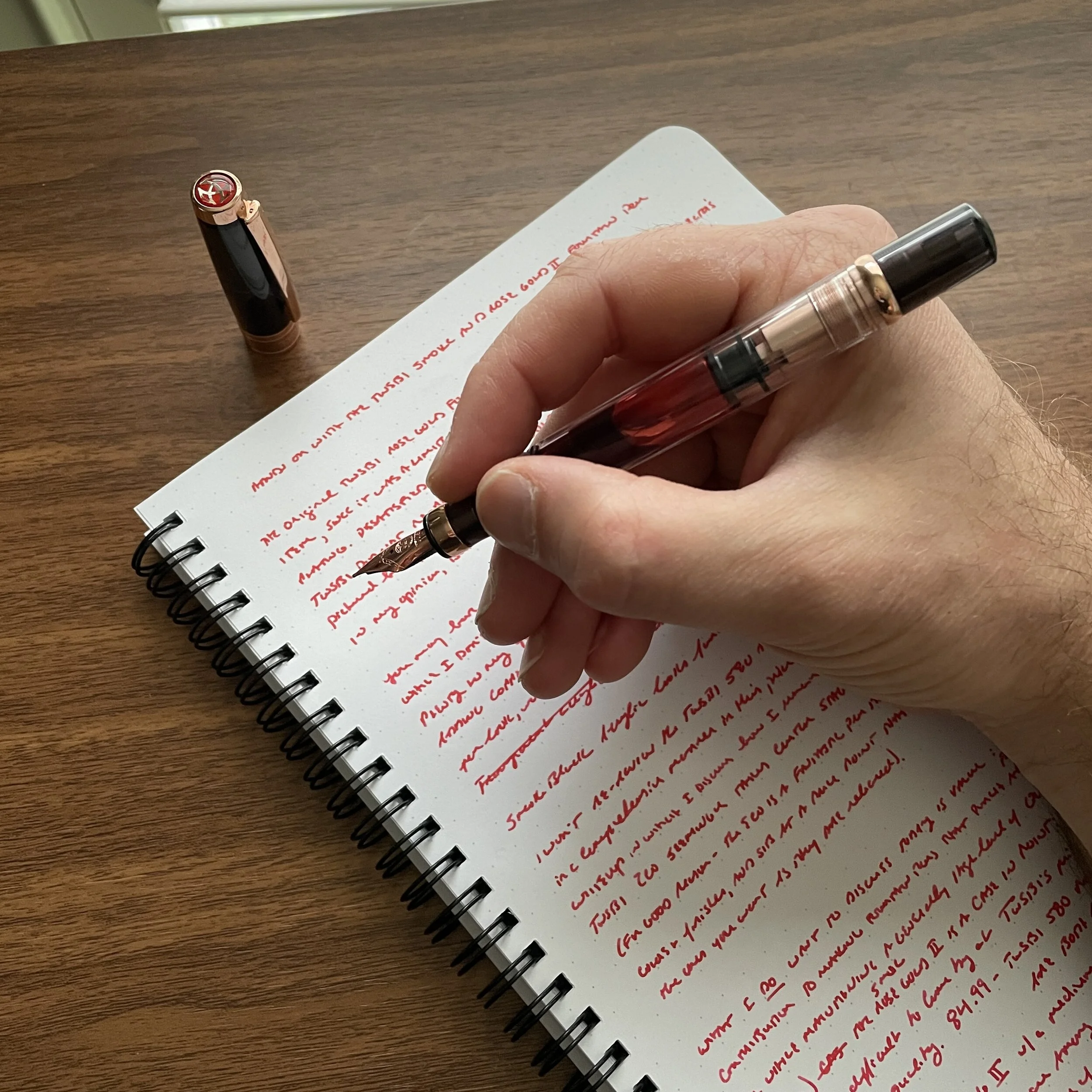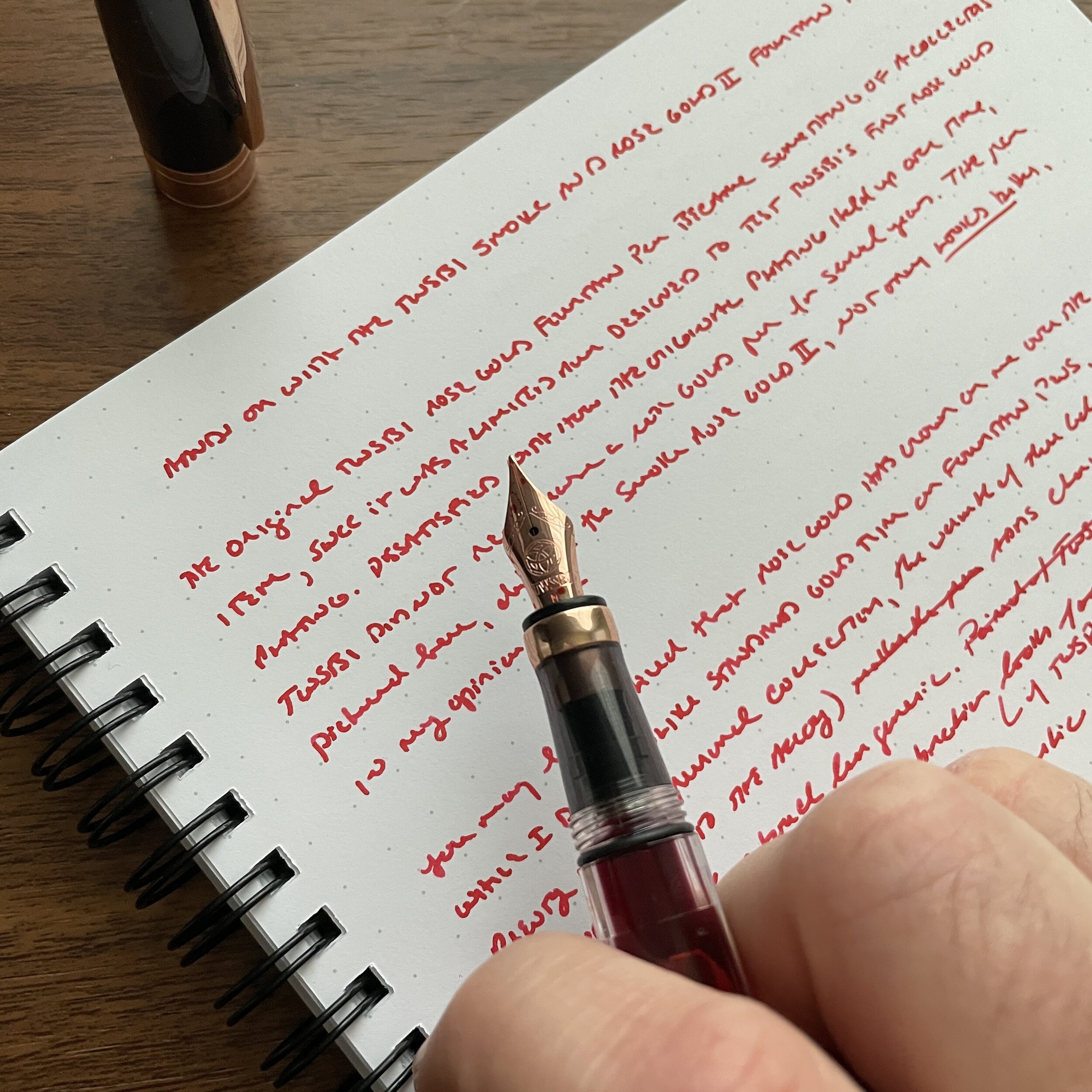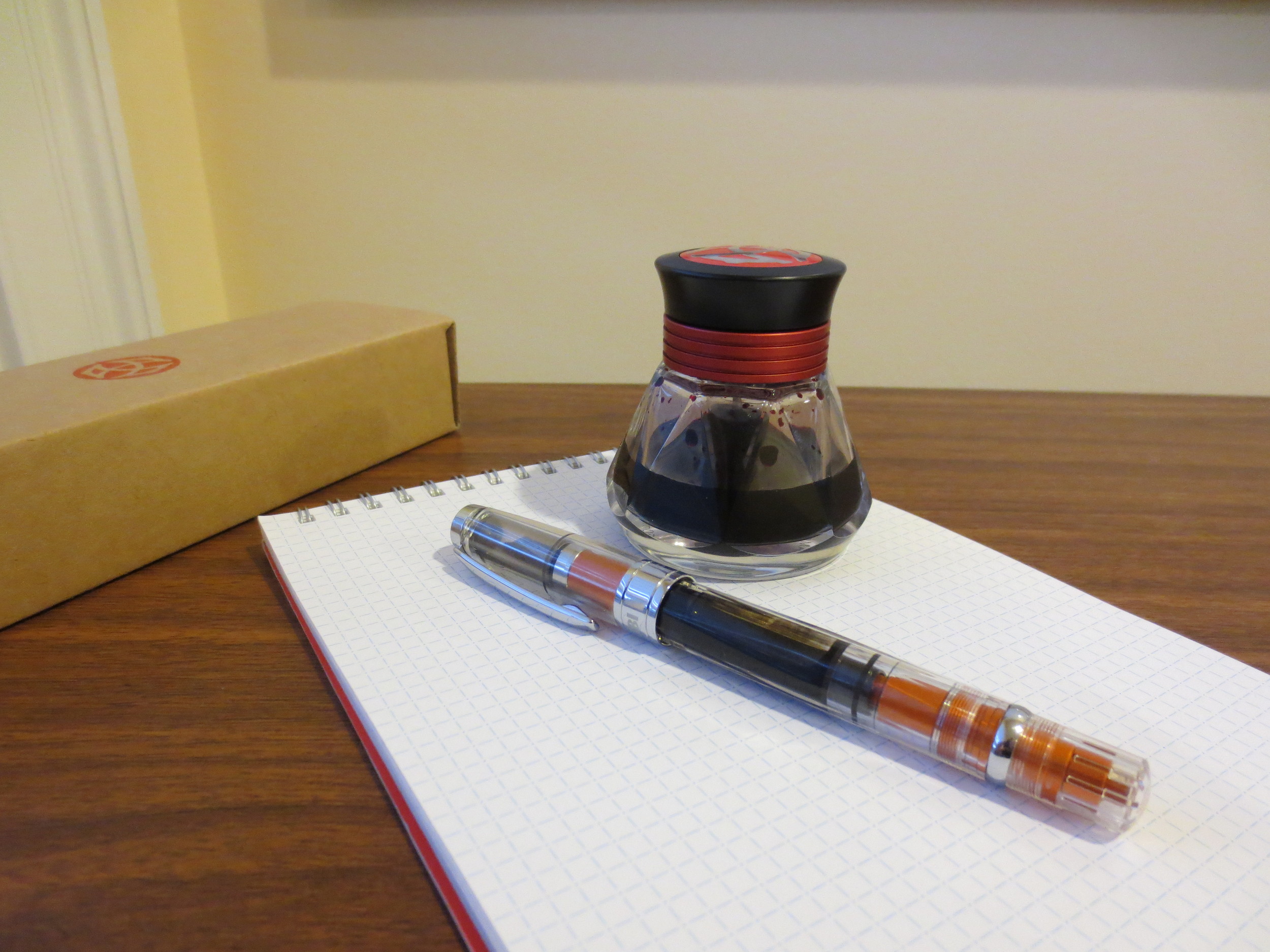Build
TWSBI loses a few points in any discussion of build and manufacturing, simply because rumors of poor quality control have dogged the company from the beginning. Like any reports that come via the internet, they started as valid criticism but, at least in my opinion, have “gone viral” to some degree, resulting in exaggerated claims of poor quality. To its credit, TWSBI has responded well, and I haven’t heard of an example where TWSBI has failed to replace broken pen parts (or the entire pen) where a customer has reported a defect.
The plastic used to manufacture the 530, 540, and the Mini is prone to cracking, particularly at the section, though caps have cracked as well. TWSBI apparently has addressed the issue with the 580 to a degree—reports of cracking aren’t nearly as widespread. With the Eco, however, TWSBI adopted a new round barrel (as opposed to the faceted barrel of the Diamond series), which may indicate that the early manufacturing issues had more to do with the faceted design of the "Diamond" pens than the materials used to make them. Personally, I think a round barrel 580-style pen would be interesting, though the faceted “Diamond” motif has become something of a TWSBI hallmark. The 580AL that I'm reviewing here has a section and certain other parts made of aluminum as opposed to plastic, presumably making that model more durable.
For all the talk of cracking, however, and for all the TWSBI pens I have owned (and used heavily), I’ve only had the plastic crack on me once. My TWSBI mini developed one small hairline in the section threads (probably caused by me over tightening the cap), which didn’t cause me any functional issues. So from personal experience (with Minis, 540s, and 580s), TWSBI’s quality has been good. You also can't lose perspective on what TWSBI has been trying to do: manufacture a reasonably priced, accessible piston-filling fountain pen. This is no easy task, and at the $55 price point you have to expect some sacrifices in the quality department. Is this a tank-like Pelikan M800? No, but it also doesn't cost $400.
Pricing
TWSBI’s current pricing structure ranges from $30 to $75. The ECO is TWSBI’s new entry-level model. Next up is the standard model Diamond 580, the Mini, the TWSBI Classic, the 580AL (featured in this review); and the Vac 700 (a vacuum filling pen). TWSBI’s now-discontinued Micarta pen was priced at $100, making it the most expensive pen TWSBI offered.
Note: the 580AL in orange is no longer offered. The 580AL is, however, available in standard aluminum. I wonder what color they will issue next? The long-rumored "Vac Mini" should also arrive this year. Note: As of April 2021, you can purchase select TWSBI Products, including the TWSBI 580, directly from the T.G.S. Curated Shop.
Nibs
TWSBI nibs are generally of high quality, especially since they switched to custom JoWo nibs a few years back. Apart from a Vac 700 I owned a few years back, none of my pens have required adjustment to the nibs, though I have had some custom-ground to cursive italic and architect's points. Actually, one of my favorite things about TWSBI pens is the ability to swap nibs. You can save a lot of money by purchasing one TWSBI pen with some spare nib units and having those nib units customized--depending on how many spare nibs you carry, it's like four pens in one!



